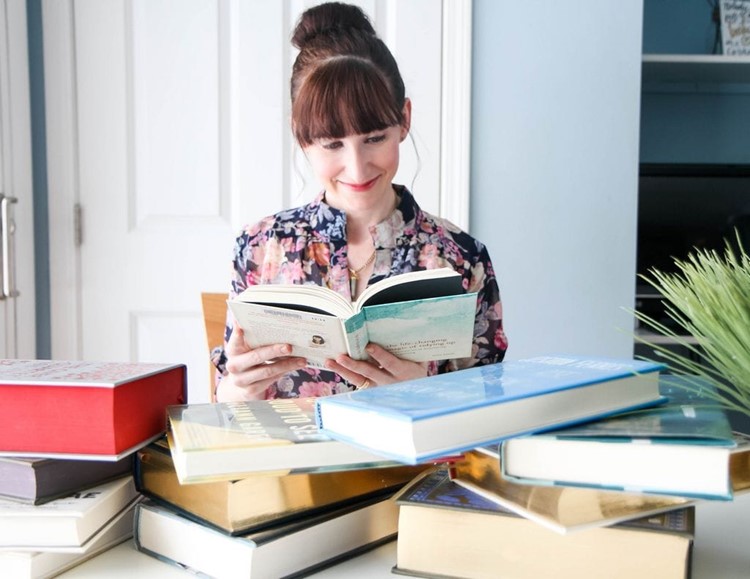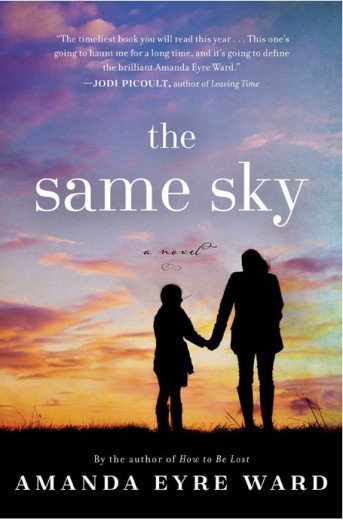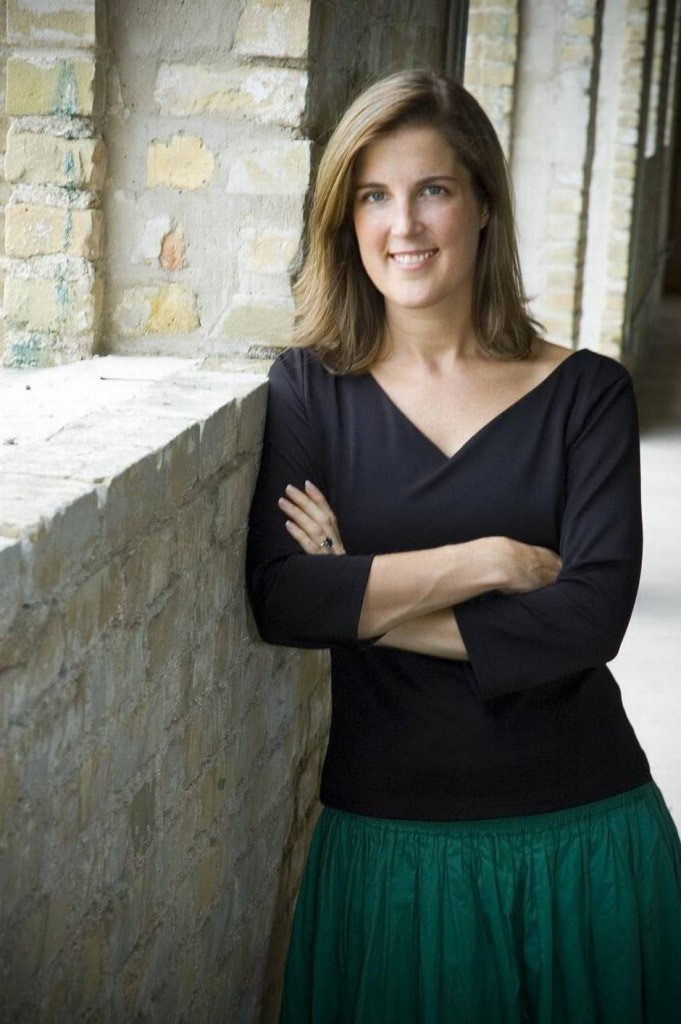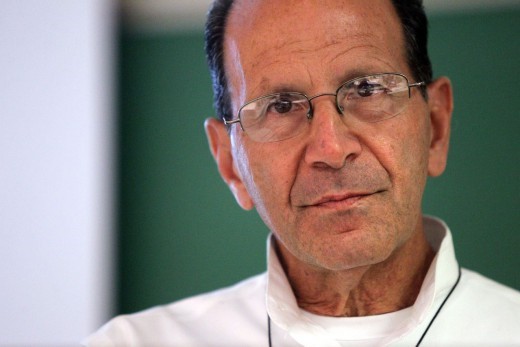
Happy Easter Sunday! I hope that you are all enjoying celebrating this season with your family! Today I am excited be interviewing Amanda Eyre Ward, in this week’s Sundays With Writers, about her beautiful and haunting book, The Same Sky. It made my must-read list for last month’s round-up of great reads and today I am learning a little bit more about the story behind the story.

Ward alternates two stories in The Same Sky– one of a typical middle-class woman who is struggling with infertility and becomes a mentor to a struggling teen and the other story of a young girl and her brother who face the harshest kind of poverty and are trying to get to America where they can finally be reunited with their mother and safe. The story of her journey to America is harrowing and devastating to read. Ward doesn’t hold back on setting the scene, giving you an eye-opening look at the real struggles of coming to America. Their lives intertwine and provide a satisfying conclusion to this sad story.
I found this book disturbing in some parts and I have been carrying some of the scenes around with me this month. There is poverty and then there is POVERTY. We are talking, eating flour and water for dinner (if you are lucky), addictions to glue to feel full by small children, parents abandoning a child to take care of another child and head to America. It was really heartbreaking. I knew after reading it that I had to reach out to Amanda and see if she could share why this story was so important to tell and what we, as readers, can learn from this book.
Ward does a great job of contrasting the struggles of a typical middle-class white suburban mother against the struggles of a child in poverty effectively without being mean about it. It made me think about how my struggles are so minor compared to the struggles of others.
Grab your morning coffee and let’s settle in with Amanda about her hauntingly beautiful book!

Can you share a little bit about the research you had to do on immigrant children and children at the Mexico/US border to start shaping this book and the story of Carla?
Yes. When I first became obsessed with the children who ride the Beast to find their parents in the US, I had no idea how on Earth I would research the topic. (I actually have an almost magical belief that the right topics come to me at the right time…as do the people/books/travels I need to understand the topics…but that’s another question entirely!)
It turns out that another mom at my children’s school runs many of the shelters at the US border for unaccompanied minors was apprehended trying to enter the US. She was kind enough to bring me to Brownsville and San Diego to talk to the kids about being a writer. I was also able to ask the children about their journeys to the US. To a one, their stories were harrowing and amazing and brave and sad…their voices all combined to create Carla’s voice.
I hope it is okay to say that I have been carrying the story of Carla and her brother around for the last few weeks and I can’t stop thinking about the horrific poverty they faced. First, how hard was it for you hearing these stories and then shaping this story into a book and, secondly, how do you think your readers could help change the real story of immigrant children?
Of course it is OK! It’s one of the reasons I wrote the book, in fact. It was incredibly hard to hear these kids’ stories…especially being a mom myself. I had a hard time turning off the kids’ voices. I still struggle with holding the knowledge that every night, as I tuck my children into bed, there are children sleeping on cardboard boxes by train tracks…and there are kids clinging to the tops of trains, or trying to sleep after another day with no food and no hope, or unable to sleep because they are terrified that the local gang will come for them. The list goes on. But crafting the novel helped me make sense of one girl’s story…I was able to bring Carla to safety.
There are many practical ways to help these children–some on my website. But I tell readers (and friends) that the most important thing is to remember that these are children–like our children, like we were children. It is a humanitarian crisis, and these kids need and deserve asylum, kindness, care, and the ability to dream of a safe life. It is all too easy to turn away from the “surge” or “waves” of kids (as they are portrayed in the media). But you must try to remember that these are sweet, individual children. Then it’s harder to turn away.
There is a really effective use of contrast in creating Alice, a relatable middle class white woman, in this story. Why do you think this contrast is so necessary in the telling of this story?

In the course of my research, I watched talks given by Father Alejandro Solalinde, who runs a shelter for migrants in Ixtapec, Mexico. He said that these kids have the spiritual capital the US is lacking. This struck me, and became one of the major themes of the book: though Carla has no material goods, her faith and spiritual capital is something Alice (who quite literally has achieved The American Dream) is lacking. I wanted to show that these kids have so much to teach us about the power of faith and courage.
Whose voice was harder for you to craft- Carla’s or Alice’s? Why?
I am currently working on a book with two voices (though 3rd, unlike Alice and Carla’s 1st) and it’s funny: some days I want to write one character, and some days, another.
I wrote Carla’s section very fast…I couldn’t bear to have her linger along her journey, and was obsessed with getting her to safety. Then I inserted Alice’s sections later.
Almost every morning on NPR, I hear stories about immigration from both points of views, regarding immigrants in the US and immigration laws. Although this book is not political, do you hope people might walk away with a different viewpoint by crafting Carla’s story?
Yes–I want readers to open their minds and hearts and listen to one child…then they might find they have different views on many issues. (I did.)
In this novel you paint so many heartbreaking scenes that pulled at my heartstrings. I am wondering, as a mother, what was the hardest scene for you to write?
The scene after Carla leaves the hospital, when her mother is bathing her in their tub in the Ace Motel. I still cry thinking about that scene.
I have read so many great books this year about the struggles of immigrants like Americanah, The Book of Unknown Americans, and your beautiful book. Do you have any other book or film recommendations (fiction or non-fiction) for people interested in learning a new viewpoint on this topic?
Enrique’s Journey and The Beast are two amazing nonfiction books…I also adored the movie Sin Nombre.
If you could tell anyone to read one book right now (other than your own) what would that book be?
My favorite book last year was Fourth of July Creek by Smith Henderson. It’s dark, riveting, gorgeous, important.
You can connect with Amanda Eyre Ward on GoodReads or through her website! I’m always thankful for these moments with writers and I hope you will pick up this amazing book! You can always connect with me on GoodReads,through our books section of our site, and you can read our entire Sundays With Writers series for more author profiles. Happy reading, friends!
*This post contains affiliate links!
Pin It